Fiches poissons d'eau douce (page 9)
Page 9 des 1910 espèces de poissons d'eau douce avec 60 fiches. Il y a 24 genres différents de Channa à Copella.
Liste des fiches de Channa harcourtbutleri à Copella carsevennensis
- Channa harcourtbutleri
 Tête de serpent birman
Tête de serpent birman
10,0 → 19,4 cm (> 120 L)
pH 7,0–7,5 | GH 8–15 | 15–24°C - Channa micropeltes
 Poisson à tête de serpent
Poisson à tête de serpent
50,0 → 130,0 cm (> 800 L)
pH 6,0–7,5 | GH 3–20 | 22–28°C - Channa orientalis
 Tête de serpent de Ceylan
Tête de serpent de Ceylan
10,0 → 18,0 cm (> 300 L)
pH 6,0–7,5 | GH 5–20 | 23–28°C - Characidium zebra

6,0 → 7,0 cm (> 50 L)
pH 6,0–7,0 | GH 3–10 | 23–27°C - Charax condei
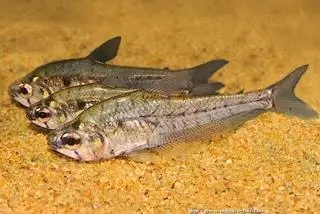
4,5 → 5,5 cm (> 120 L)
pH 5,5–7,0 | GH 1–10 | 23–25°C - Cheilochromis euchilus

22,0 → 35,0 cm (> 1500 L)
pH 7,5–8,5 | GH 10–20 | 23–26°C
- Chiapaheros grammodes

20,0 → 25,0 cm (> 800 L)
pH 7,0–8,0 | GH 10–30 | 24–30°C - Chiloglanis neumanni

6,0 → 6,5 cm (> 300 L)
pH 6,0–7,5 | GH 3–12 | 20–26°C - Chindongo bellicosus

7,5 → 10,0 cm (> 450 L)
pH 7,5–8,5 | GH 10–20 | 23–26°C - Chindongo cyaneus

6,0 → 7,8 cm (> 450 L)
pH 7,5–8,5 | GH 10–20 | 23–26°C - Chindongo demasoni
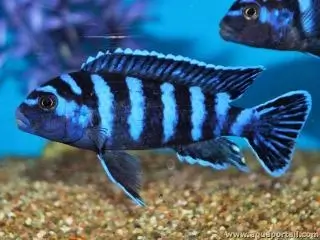
7,0 → 9,0 cm (> 200 L)
pH 7,5–8,5 | GH 10–30 | 23–27°C - Chindongo elongatus
 Mbuna allongé
Mbuna allongé
8,0 → 9,5 cm (> 300 L)
pH 7,5–8,5 | GH 10–20 | 22–26°C - Chindongo flavus
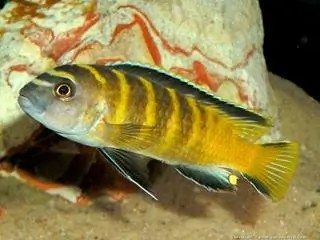
6,0 → 8,0 cm (> 200 L)
pH 7,5–8,5 | GH 10–30 | 22–26°C - Chindongo heteropictus
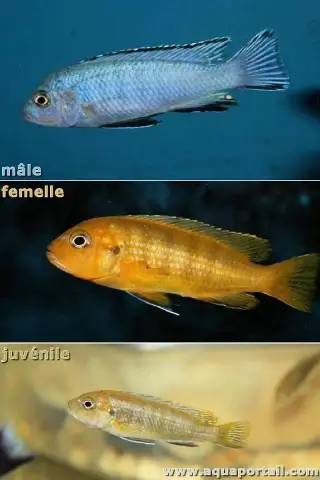
7,5 → 10,0 cm (> 300 L)
pH 7,5–8,5 | GH 10–20 | 23–26°C - Chindongo minutus

5,6 → 7,0 cm (> 200 L)
pH 7,5–8,5 | GH 10–20 | 22–24°C - Chindongo saulosi

7,5 → 9,0 cm (> 300 L)
pH 7,5–8,5 | GH 10–30 | 23–27°C - Chindongo socolofi
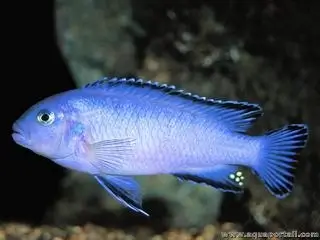
10,0 → 12,5 cm (> 300 L)
pH 7,5–8,5 | GH 10–30 | 23–27°C - Chitala blanci
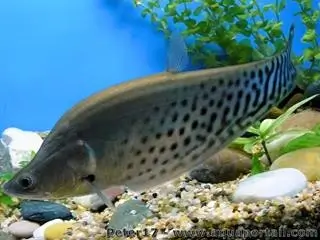 Poisson-couteau royal
Poisson-couteau royal
80,0 → 120,0 cm (> 6000 L)
pH 6,0–7,5 | GH 3–15 | 23–27°C - Chitala chitala
 Poisson-couteau indien
Poisson-couteau indien
75,0 → 120,0 cm (> 6000 L)
pH 6,0–8,0 | GH 3–20 | 24–28°C - Chitala ornata
 Poisson-couteau clown
Poisson-couteau clown
80,0 → 100,0 cm (> 6000 L)
pH 6,0–7,5 | GH 3–15 | 24–28°C - Chlamydogobius eremius
 Gobie du désert
Gobie du désert
5,0 → 6,0 cm (> 50 L)
pH 7,0–8,0 | GH 10–20 | 10–35°C - Chromobotia macracanthus
 Loche-clown, Botia macracantha
Loche-clown, Botia macracantha
30,0 → 40,0 cm (> 800 L)
pH 5,0–7,5 | GH 1–15 | 24–30°C - Chrosomus cumberlandensis
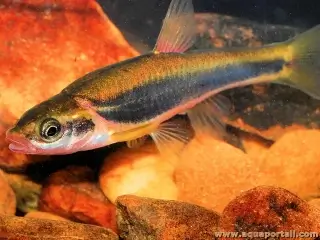 Vairon à flancs noirs
Vairon à flancs noirs
5,0 → 7,6 cm (> 200 L)
pH 6,0–7,5 | GH 3–10 | 5–23°C - Chrosomus erythrogaster
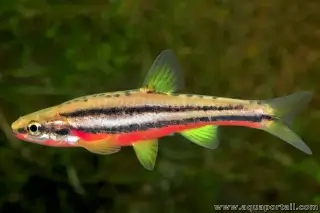 Vairon à ventre rouge
Vairon à ventre rouge
5,5 → 9,1 cm (> 200 L)
pH 6,0–7,5 | GH 3–12 | 2–25°C
- Chrosomus oreas
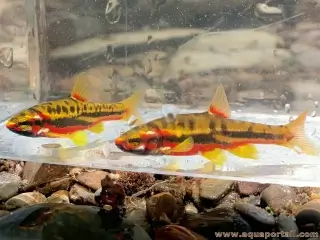
5,5 → 7,2 cm (> 200 L)
pH 6,0–7,5 | GH 3–12 | 2–25°C - Cichla kelberi
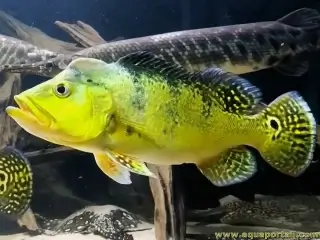
30,0 → 40,0 cm (> 1500 L)
pH 5,0–6,5 | GH 3–8 | 20–28°C - Cichla ocellaris
 Toukounaré, Kounanni
Toukounaré, Kounanni
60,0 → 75,0 cm (> 6000 L)
pH 6,0–7,0 | GH 3–10 | 24–29°C - Cichla piquiti
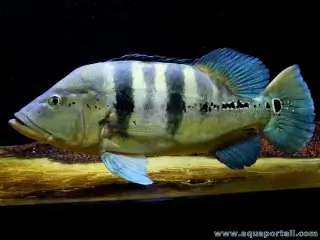
35,0 → 48,0 cm (> 1500 L)
pH 5,0–6,5 | GH 3–12 | 25–28°C - Cichla temensis

60,0 → 100,0 cm (> 1500 L)
pH 5,0–6,5 | GH 3–12 | 26–30°C - Cichlasoma amazonarum

11,0 → 13,5 cm (> 450 L)
pH 6,0–7,0 | GH 3–10 | 22–27°C - Cichlasoma araguaiense

8,0 → 10,0 cm (> 120 L)
pH 6,5–7,5 | GH 5–20 | 23–27°C - Cichlasoma bimaculatum
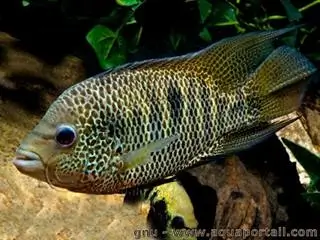 Acara noir
Acara noir
12,0 → 18,0 cm (> 300 L)
pH 6,5–7,0 | GH 3–8 | 16–24°C - Cichlasoma dimerus
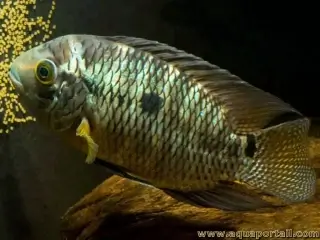
10,0 → 13,0 cm (> 450 L)
pH 6,5–7,5 | GH 5–20 | 23–27°C - Cichlasoma portalegrense

11,0 → 14,0 cm (> 450 L)
pH 6,0–7,0 | GH 3–8 | 16–24°C - Cichlasoma pusillum
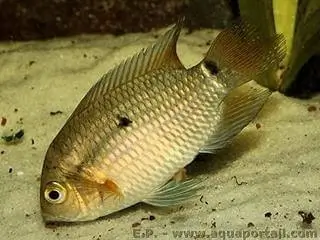
6,0 → 7,0 cm (> 120 L)
pH 6,5–7,5 | GH 5–15 | 22–27°C - Cincelichthys bocourti
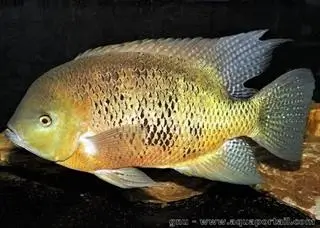 Cichlidé d'or
Cichlidé d'or
30,0 → 38,0 cm (> 1500 L)
pH 7,0–8,0 | GH 8–25 | 25–29°C - Cincelichthys pearsei
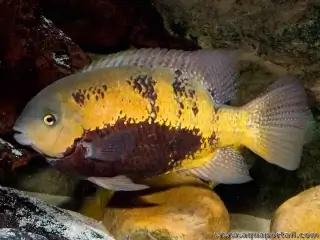 Cichlidé Pantano
Cichlidé Pantano
30,0 → 40,0 cm (> 1500 L)
pH 7,5–8,5 | GH 3–12 | 24–30°C - Clarias batrachus
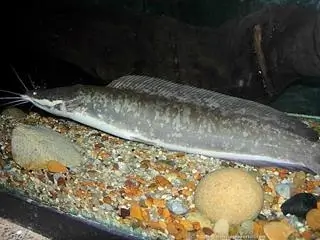 Silure-grenouille
Silure-grenouille
40,0 → 80,0 cm (> 450 L)
pH 6,0–8,0 | GH 5–30 | 10–30°C - Clarias gariepinus
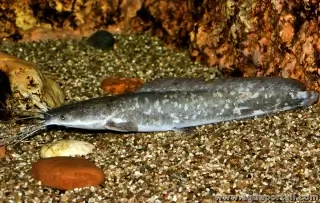 Poisson-chat nord-africain
Poisson-chat nord-africain
90,0 → 170,0 cm (> 6000 L)
pH 6,5–8,0 | GH 5–30 | 8–35°C - Cleithracara maronii
 Acara Maroni
Acara Maroni
10,0 → 12,0 cm (> 80 L)
pH 5,0–7,0 | GH 1–8 | 23–29°C - Clupeichthys aesarnensis

6,0 → 7,0 cm (> 200 L)
pH 5,5–7,5 | GH 3–15 | 22–28°C - Cobitis taenia
 Loche de rivière, Loche épineuse
Loche de rivière, Loche épineuse
5,0 → 13,5 cm (> 200 L)
pH 7,0–8,0 | GH 10–15 | 14–18°C - Colomesus asellus

8,0 → 12,0 cm (> 200 L)
pH 5,5–7,5 | GH 5–15 | 22–28°C - Colomesus psittacus
 Compère à bandes
Compère à bandes
25,0 → 30,0 cm (> 450 L)
pH 7,0–8,5 | GH 10–30 | 24–28°C - Colossoma macropomum
 Pacu noir
Pacu noir
50,0 → 100,0 cm (> 1500 L)
pH 5,0–7,5 | GH 1–20 | 20–29°C - Congochromis dimidiatus
 Perche africaine
Perche africaine
6,0 → 7,0 cm (> 50 L)
pH 5,0–6,5 | GH 1–8 | 22–26°C - Congochromis sabinae

3,8 → 5,3 cm (> 50 L)
pH 5,0–7,0 | GH 1–8 | 23–26°C - Congopanchax myersi

2,0 → 2,3 cm (> 20 L)
pH 5,5–6,5 | GH 3–8 | 21–24°C - Copadichromis azureus

12,0 → 15,0 cm (> 450 L)
pH 7,5–8,5 | GH 10–20 | 22–26°C - Copadichromis borleyi

12,0 → 15,0 cm (> 800 L)
pH 7,5–8,5 | GH 10–25 | 22–26°C - Copadichromis chrysonotus

10,0 → 12,5 cm (> 300 L)
pH 7,5–8,5 | GH 10–25 | 23–27°C - Copadichromis jacksoni

16,0 → 20,0 cm (> 450 L)
pH 7,5–8,5 | GH 10–20 | 22–26°C - Copadichromis mbenjii

12,0 → 15,0 cm (> 300 L)
pH 7,5–8,5 | GH 10–25 | 23–26°C - Copadichromis parvus

8,0 → 10,0 cm (> 300 L)
pH 7,5–8,5 | GH 10–20 | 23–27°C - Copadichromis sp. Kawanga
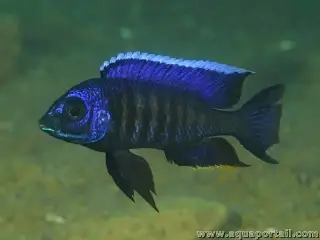
12,0 → 15,0 cm (> 450 L)
pH 7,5–8,5 | GH 10–20 | 22–26°C - Copadichromis trimaculatus

16,0 → 20,0 cm (> 450 L)
pH 7,5–8,5 | GH 10–25 | 23–26°C - Copadichromis verduyni

9,5 → 12,0 cm (> 450 L)
pH 7,5–8,5 | GH 10–20 | 22–26°C - Copadichromis virginalis
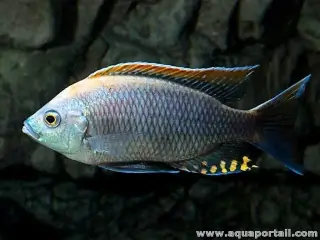
11,0 → 13,2 cm (> 450 L)
pH 7,5–8,5 | GH 10–20 | 23–26°C - Copella arnoldi
 Characin arroseur
Characin arroseur
3,2 → 3,8 cm (> 50 L)
pH 5,5–7,0 | GH 1–10 | 24–29°C - Copella carsevennensis
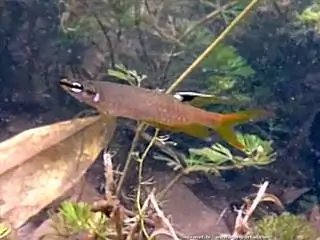 Mulet-montagne
Mulet-montagne
3,5 → 4,0 cm (> 50 L)
pH 6,0–7,5 | GH 3–12 | 23–27°C
Les données biologiques des espèces indiquent la taille en cm et, si les valeurs sont pertinentes, d'autres caractéristiques spécifiques.
